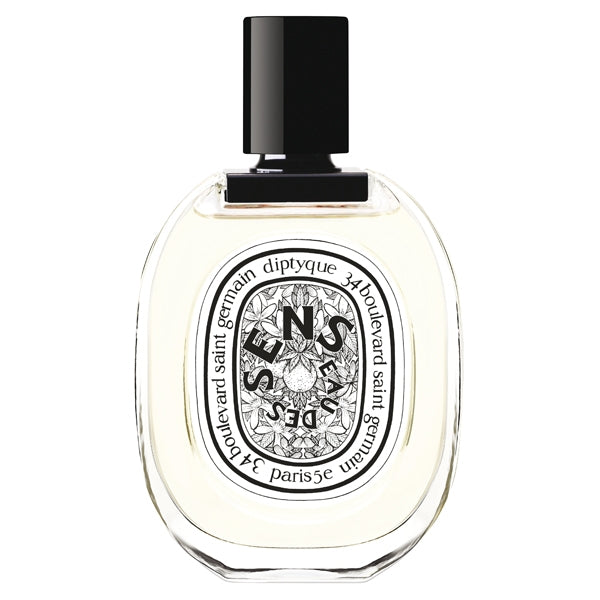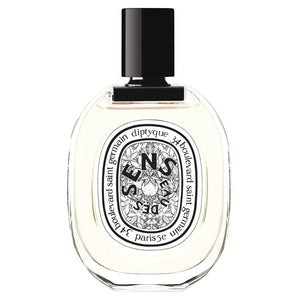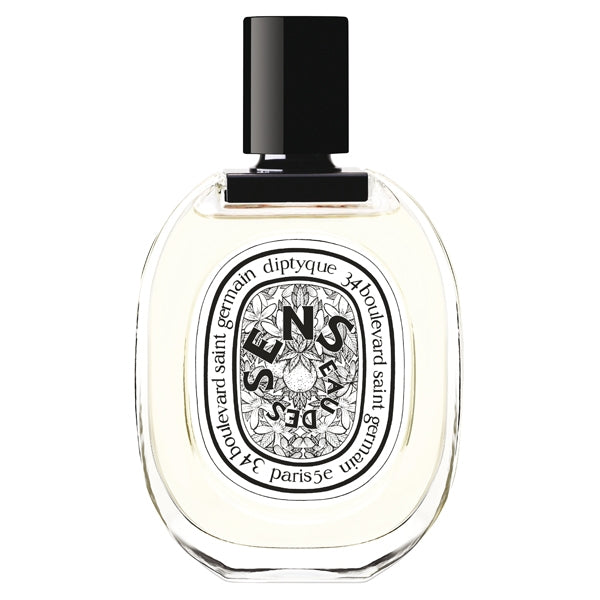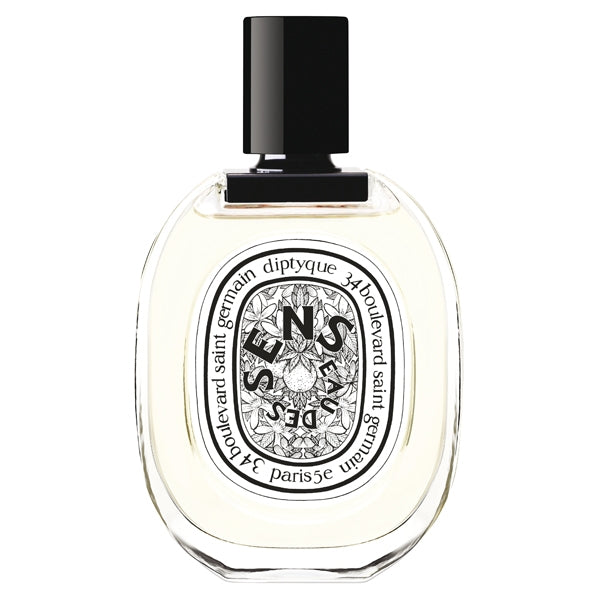‘Eau des Sens’ – water of the senses – causes confusion. A confusion of the senses. Some see colours when they smell it. Others hear a whisper. They think they are tasting the ambrosia of the gods or stroking delicate, cool skin with their nose. That is “Eau des Sens”! A sensational score for the senses. What an enchanting illusion. The starting point was a new olfactory perspective, a kind of philosophy of gentleness. The gentleness of the body. The gentleness of sensitive skin, a gentleness in which body and mind merge and draw from a fresh, all-encompassing source.
Eau des Sens owes its soul and character to the way it is made. The citrus fruits unfold all their concentrated life energy with their leaves, blossoms and peel. The neroli oil brings a blossom branch with it, providing a particularly sparkling impulse. And the delicate orange shimmer still hints at the blossom. ‘Eau des Sens’ is a genuine experience in the Diptyque style. Just when you think you've understood it, it draws your senses in a different direction, suddenly revealing facets of wood and mysterious spices. ‘Eau des Sens’ is round, harmonious and tender – and, in the words of the poet Paul Eluard, ‘as blue as an orange’ shining on its green branch like the southern sun. Then ‘Eau des Sens’ becomes deep again – deep like a breath that draws in the warm wood notes and the fresh scent of ginger. You could almost think that ‘Eau des Sens’ has lost its senses, so boldly does it juggle its elements. And perhaps it is not very sentimental at all, but rather sensual – sensitive.
Is Eau des Sens a fragrance for women or men? For a Diptyque fragrance with the name Eau des Sens – which also sounds like Eau d'Essences – this question is contradictory in two ways. But Eau des Sens smells so good that we forgive it everything. A true balm for the senses.
The Eau des Sens Design
The design of "Eau des Sens" is based on two elements that underscore the concept of the fragrance. Firstly, leaves, fruits and flowers of the bitter orange tree. Secondly, illustrative elements of visual art from the 1960s, which through geometric patterns and contrasts produced extraordinary visual effects associated with Op Art. Illusion, synesthesia and a psychedelic touch lies in the air, an optical game of the senses.




